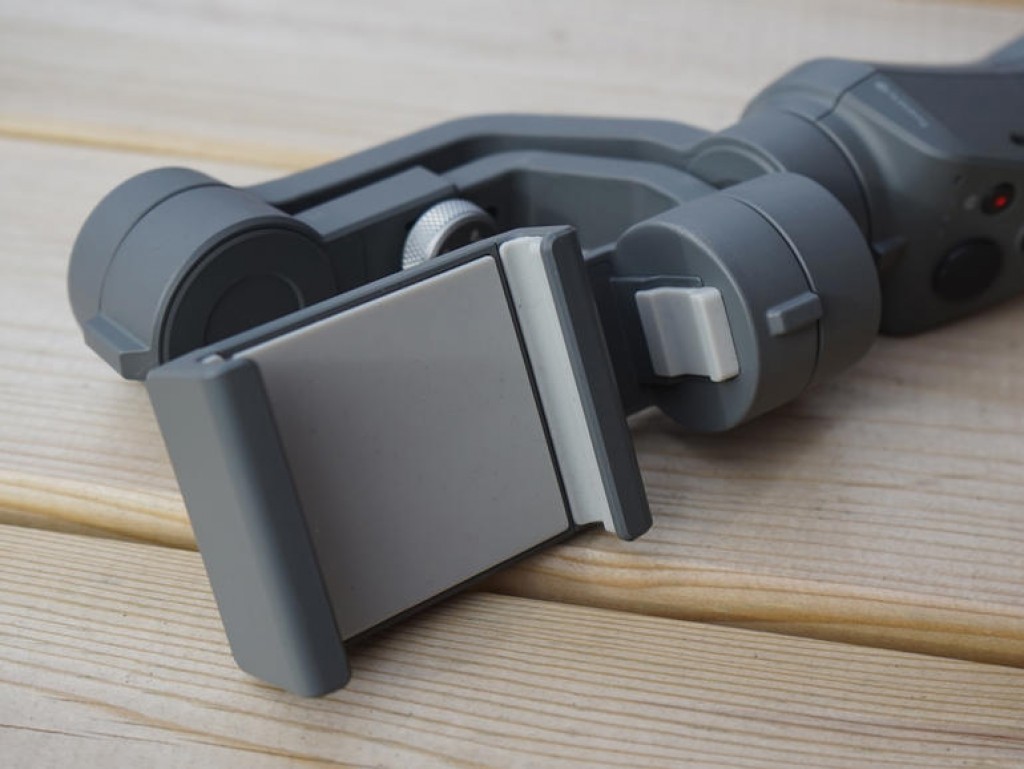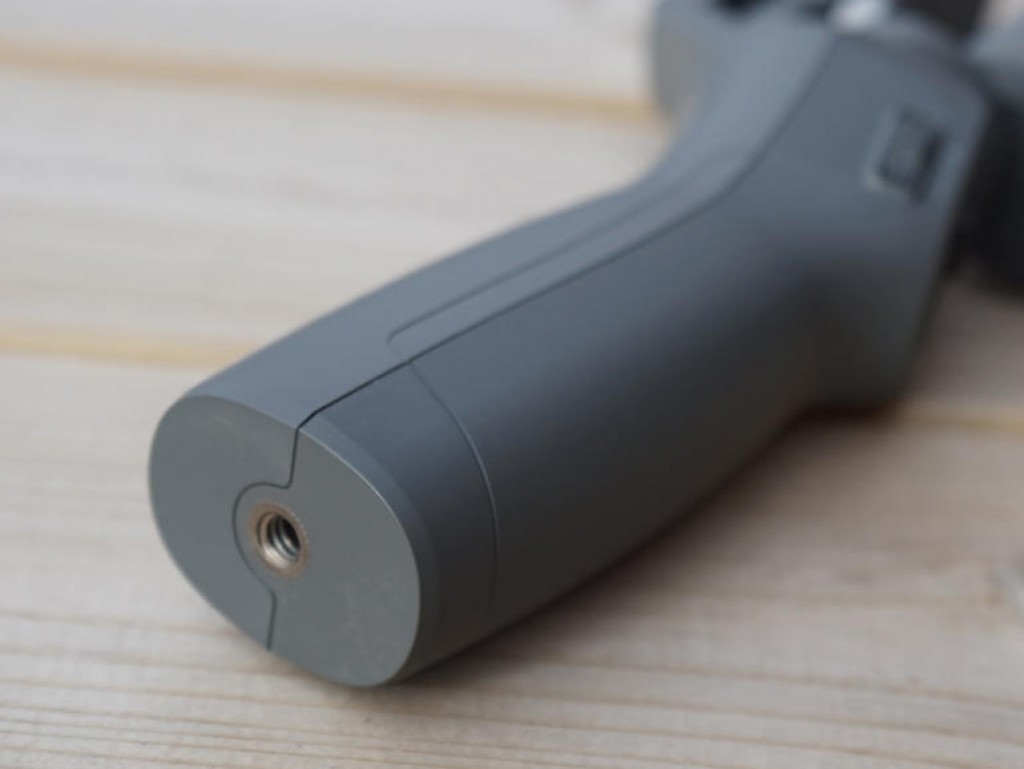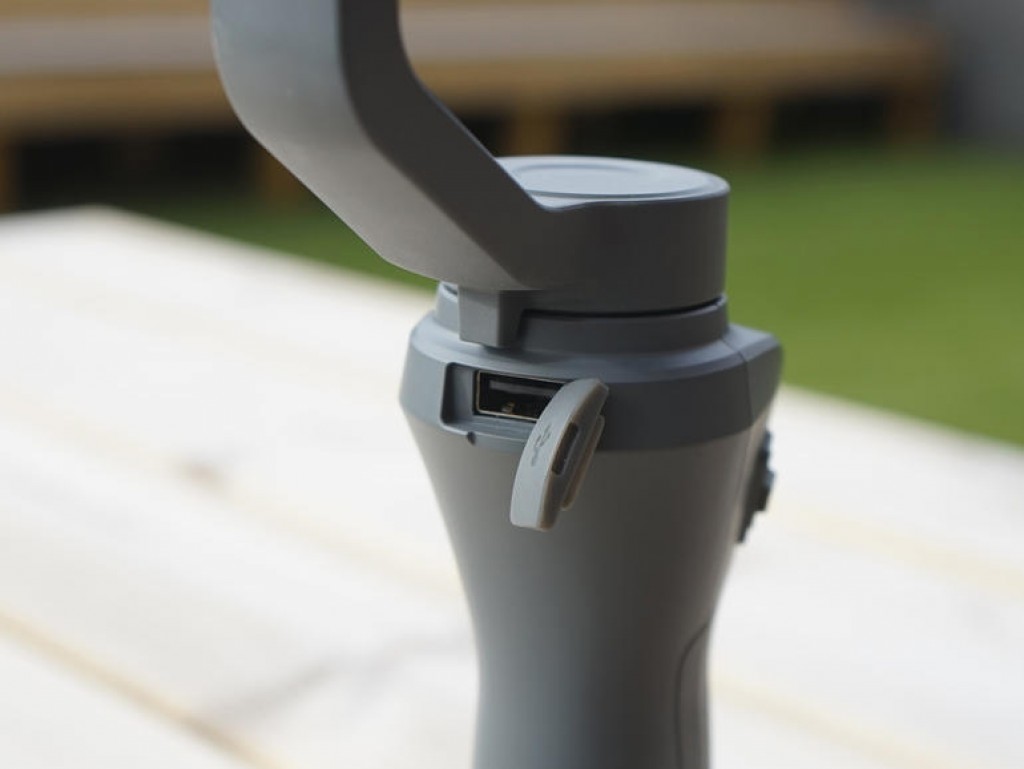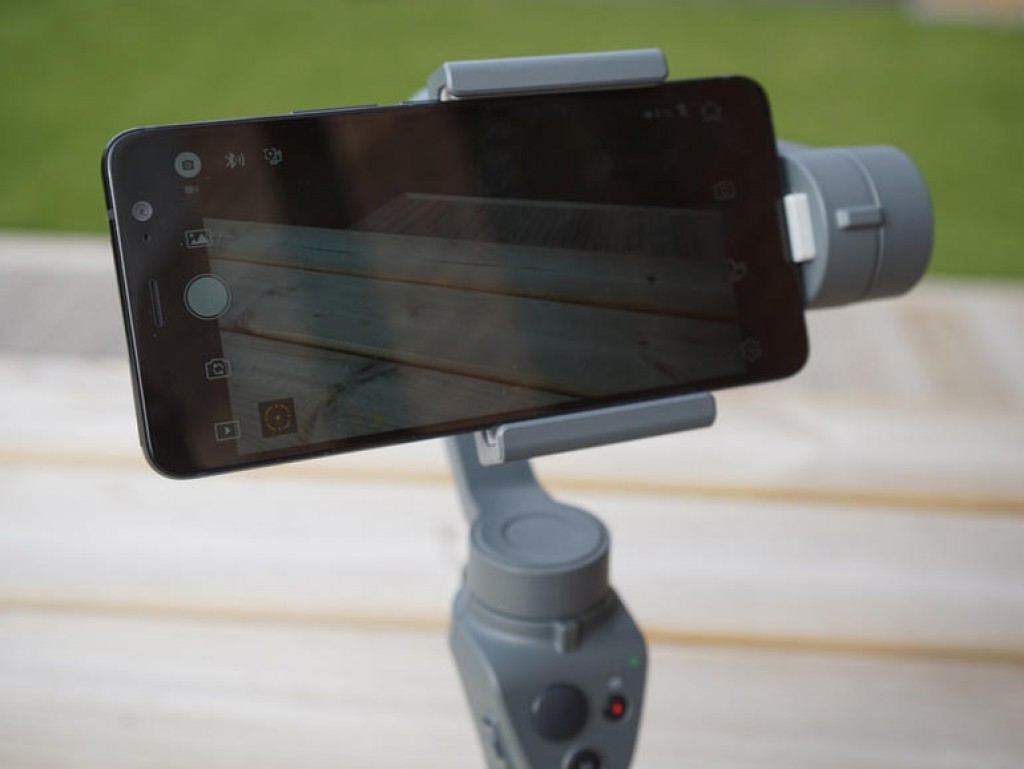
DJI has been helping filmmakers shoot silky smooth footage from the skies for a while now, thanks to the stabilised cameras bolted onto its Phantom and Mavic drones.
The original Osmo brought that gimbal tech to ground level in 2015, and then to your phone a year later, but it was a bit of an investment. Only aspiring Steven Spielbergs with smartphones need apply.
This second generation version, though? It’s a lot more affordable.
In fact, it doesn’t matter if you’re planning to be the next Zoella or if you just want to film the family holiday – the Osmo Mobile 2 is so good that it’s a must for mobile movie makers.
STICK IT TO ME



Gimbals like the Osmo Mobile 2 are simple stuff, really: they grip your device, and hold it steady using three tiny motors that counterbalance over all three axes of movement.
Here, you get a spring-loaded mount that holds your phone in place, with enough adjustment to fit the mightiest of phablets. Once it’s in place, the gimbal keeps it steady, even when you’re walking about or waving it in front of your face.
So far, so similar. But the original Osmo didn’t have a handy tripod thread on the bottom like this does, and couldn’t shoot in portrait mode.
The sequel has an adjustable clamp that can be rotated between portrait and landscape, letting you stabilise your snapchat selfies and Instagram stories as well as your phone’s standard camera. Most phones still reserve optical image stabilisation for their rear cameras, so this could come in really handy if you’re more of a front-facing fan.
It’s a bit fiddly, with a locking mechanism you’ve got to tweak every time you change between modes, but on the other hand, that makes you think about balance.
There’s a fair bit of manual adjustment, y’see. If you don’t move the extending arm, which helps set the weight balance exactly right, your phone will topple over whenever you try to tilt or pan.
MIX IT UP



That’s not the only difference between this and the original. There aren’t as many buttons, so things aren’t so intimidating for beginners.
One button now does four jobs: turning the gimbal on and off, swapping between panning and still modes, recentering, and swapping between front and rear cameras. That’s a lot, but it’s pretty intuitive once you actually start filming things.
A camera zoom slider is a nice addition, even if the digital zoom on most smartphones isn’t up to much cop. A joystick lets you pan your phone around, and a record button saves you from having to tap onscreen every time you want to shoot a clip.
Some changes were also inevitable, seeing how DJI has slashed the price so dramatically. The microphone socket and bracket for adding optional attachments are both gone, along with the old trigger for controlling gimbal lock. This undoubtedly makes the Osmo Mobile 2 less suited to serious filmmakers.
At least you don’t have to use a proprietary charging cable now: it refuels over microUSB instead. Would USB-C have been a better choice? Sure, but a few compromises are OK if it means a rock bottom price.
There’s no removable battery any more, either. Once you’re drained it’s back to a power socket to top up. On the plus side, DJI reckons you’ll manage about 15 hours on a full charge, and we managed to run our smartphone flat before the gimbal gave up on us.
A USB port lets you use some of that juice to recharge your phone on the fly, but it’s really hard to hook up a cable while you’re shooting. It works better as a portable battery pack between recording sessions.
APP’S MAGIC
By itself, the gimbal will keep your phone steady, but the more advanced stuff happens in DJI’s app.
You get the basics, of course: still photos and videos can be snapped in full auto mode, with the phone handling exposure and focus. You can tap anywhere onscreen to take control yourself, or dig down into the manual modes for deeper tweaking of ISO, white balance and resolution.
Dedicated panorama, long exposure, and time lapse modes really let you get creative. Choose panorama and the gimbal will glide the phone around to capture the whole scene, in one smooth motion.
Timelapse keeps the phone steady while you take in the action, with Motionlapse and Hyperlapse variants giving a new spin on a classic. It works brilliantly, letting you program start and stop points to focus on only the important bits of a scene.
ActiveTrack even carries over from DJI’s drone line, letting you draw a box around a subject (be it person, parked car or plant pot) and have the gimbal keep it in view while you move around it.
One pointer: If your phone has an option to disable OIS, you might want to do it. That sounds counterproductive, but it can actually fight against the gimbal’s steady hand and add some unwanted ‘micro-stutter’ to your clips. This only applies if you’re using your phone’s stock camera app, though, which will also lock you out of using the zoom slider.
SHAKEN, NOT BLURRED

Even with a phone in place, the Osmo Mobile 2 won’t weigh your wrist down. It’s made of a nylon composite that’s a tiny bit lighter than the metal original – but still feels super sturdy. The fact it folds almost flat means you can happily chuck it in a bag once you’re done filming for the day, without worrying it’s going to get battered.
It also means you can shoot for hours without feeling like your arm is going to fall off. And you’ll want to, when you see the results.
Picture quality is dependent on what phone you’ll be using, but the smooth pans, tilts and steadicam-style shots you can pull off with one of these really speaks for itself. Simply walking down a street can look cinematic in a way that just wouldn’t be possible on a phone by itself.
OK, there’s a bit of a learning curve to getting truly jaw-dropping footage, with the joystick needing some finesse to pull off slow pans instead of fast, jerky movements. The gimbal has its limits, too, so tilting more than it can cope with can lead to some jarring motions while the motors try to fight the impossible.
Stick with it, though, and your video clips can end up looking properly professional.
DJI OSMO MOBILE 2 VERDICT



DJI might have ditched a few pro features to drop the price, but anyone picking up the Osmo Mobile 2 isn’t going to miss them.
This is a massive improvement on the original, with smarter tracking modes, better battery life, a lighter frame, and the option for portrait shooting that’s guaranteed to keep the InstaFamous happy.
With such a hefty price drop, it’s even verging into impulse buy territory. If you’re at all interested in shooting video with a mobile, you absolutely have to have one of these to go with it.
DJI Osmo Mobile 2 review
If you’ve ever filmed anything with your phone, you need one of these. DJI’s most affordable gimbal yet should be a budding mobile filmmaker’s first buy
Good Stuff
- Fantastic way to step up your mobile video
- Much lower price than the original
- Compact enough to take just about anywhere
Bad Stuff
- Some manual adjustment required
- Not as modular or expandable as the original
Source: stuff.tv









































